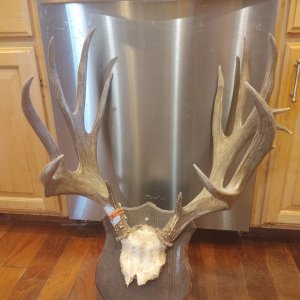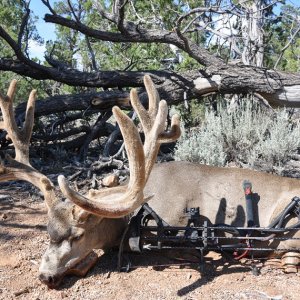HikeHunt61
Very Active Member
- Messages
- 1,381
I don’t want to come off preachy, so if this offends anyone, please accept my apologies. But I really feel that new hunters or those who in the past only used factory ammo may benefit:
With the lack of ammunition this year, some folks are turning to having others load for them, or even worse, getting some guy’s existing handloads as part of a deal. I’ve read threads on forums that look exactly like that. When supply/demand gets out of whack, people can be more willing to take risks- both on the supply and demand ends.
In my opinion- there are two major concerns with handloads not worked up for a specific rifle:
I guess my concern comes down to this: I would NEVER give my existing loads to someone else to use in their gun. Not without going through the same process I personally use to develop loads for a specific rifle, which includes reviewing results of incremental loads in that gun. I would need a personal relationship with the person. Yet it’s clear that is happening out there. I’m sure 9 times out of 10 it works out fine. Just worried about 1) or 2) above biting someone in the butt that one time.
With the lack of ammunition this year, some folks are turning to having others load for them, or even worse, getting some guy’s existing handloads as part of a deal. I’ve read threads on forums that look exactly like that. When supply/demand gets out of whack, people can be more willing to take risks- both on the supply and demand ends.
In my opinion- there are two major concerns with handloads not worked up for a specific rifle:
- The load may not be appropriate for the gun. The load may have been fine for one rifle, but too hot for another one. Or the COAL worked well in one magazine but is too long or marginal for another. Or the COAL for that load fits fine in the magazine, but the bullet runs hard into the lands. Or….
- The process used to “manufacture” the loads was not consistent and 110% safe. Did they full length size the brass? Did they accidentally use magnum primers when standards were called for? Did they check each powder charge individually, and once again confirmed powder charge before seating the bullet? Did they perform inspections at every step of the process? So many ways to mess it up…
I guess my concern comes down to this: I would NEVER give my existing loads to someone else to use in their gun. Not without going through the same process I personally use to develop loads for a specific rifle, which includes reviewing results of incremental loads in that gun. I would need a personal relationship with the person. Yet it’s clear that is happening out there. I’m sure 9 times out of 10 it works out fine. Just worried about 1) or 2) above biting someone in the butt that one time.












